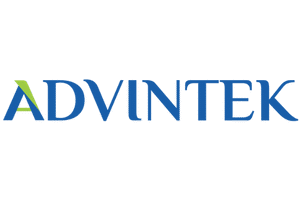As the pace of work today is very high and there is a lot of competition, there is as well pressure to deliver accurate work in less time, businesses have therefore opted to use electronic means of communication. Among the most promising actors in this regard, their special attention goes to the Peppol e-Delivery Network. This blog dissects how far e-business communication will go in reaching the future defined by Peppol and its uses in the global business setting.
What does Peppol e-Delivery Network mean?
Peppol is the abbreviation for Pan – European Public Procurement Online and it is a set of specifications drawn to help organizations exchange electronic documents independently of their geographic location and system. Initiated during the European Commission’s Large Scale Pilot project, PePPol is now a global e-procurement and e-invoicing ENATS standard.
Within the central concept of PEPPOL, there is the e-Delivery Network, which is the mechanism for the transfer of documents over the Internet. This network allows the trading partners to send, receive and exchange electronic documents that conform to accepted and predetermined formats like invoices, orders and shipping notices and which meet the legal requirements of the trading partners’ respective jurisdictions.
Key Components of the Peppol Network
Understanding the components of the Peppol e-Delivery Network is crucial for appreciating its impact on electronic business communication:
1. Access Points (APs)
An Access Point is a type of actor that is formally accredited to link users to the Peppol network. They are very much involved in the exchange and transmission of documents within and between organizations because they guarantee the right and secure means of transferring papers. There are a number of options Businesses can choose depending on the Access Point they prefer.
2. Service Metadata Publishers (SMPs)
SMPs house and regulate information-concerning participants in the Peppol network. These are aspects like the types of documents a participant can have and the formats supported regarding the type of participation. SMPs are also useful in directing documents to the right recipient for efficient communication.
3. Service Metadata Locator (SML)
It is the SML which stores all the participants’ details and helps identify the right SMP for the participant. It can function as a directory service and will help in identifying the recipient’s information and in routing the documents.
Benefits of Adopting Peppol
The adoption of the Peppol e-Delivery Network offers several benefits for businesses looking to enhance their electronic communication capabilities:
1. Interoperability
It is quite clear that one of the primary benefits provided by Peppol is the opportunity to guarantee that the systems and organizations would be compatible. So, following the standards, the businesses can effectively exchange documents with their partners and customers while not concerned with compatibility questions.
2. Compliance
Thus Peppol’s standardized and centrally managed procedures assist the companies in meeting a variety of compliance set by diverse geographical locations. This is especially so for enterprises that may engage in business across several countries thus, making them subject to several e-invoicing mandates and procurement policies and rules.
3. Efficiency and Cost Savings
The ability to exchange documents through Peppol means that the manual intervention is cut down on and errors that may be made are lessened as well as the time to do transactions is drastically cut. These result in considerable recurring expenditures and enhance business processes productivity in general.
4. Security
Thus, documents sent via the Peppol network are protected from unauthorized access and cyber threats, which guarantees the confidentiality of business information. Digital signatures and encryption that is used in the current system enhances its security.
5. Scalability
It should be noted that Peppol’s framework is intended to grow according to the businesses’ needs. Thus, it can be stated that even if a company is small at present, it can increase the volume of transactions that will be processed with the help of Peppol; therefore, it can be considered to be a future-proof solution.
6. Enhanced Traceability
Also, the application of metadata in the Peppol and the consistent structure of a document also make it easier to track. It enables the business entities undertaking the transaction to monitor the status of the documents in real-time, hence creating more openness.
7. Streamlined Onboarding
Peppol makes it easier to onboard new partners and suppliers into an organization’s supply chain. COA has the feature that requiring all participants to use the same standards eliminates the need for complex customization every time a new participant joins the electronic communication framework of the business.
Peppol in Action: Real-World Applications
1. E-Invoicing
Electronically issued invoices are perhaps one of the most well-known uses of Peppol. By the use of Peppol, electronic invoices can be sent and received hence resulting in faster processing and payment cycles for the businesses. Besides, it helps in increasing cash flow as well as increasing the efficiency of processing the financial exchanges in terms of clarity and reliability.
2. Procurement
Peppol supports exchange of procurement through the use of purchase orders, order responses as well as dispatch advice documents. It also helps in automating the procurement process, managing the expenses required to carry out the procurement, and also helps in improving the relationship between the buyers and suppliers.
3. Government Transactions
Today, numerous national governments actively use Peppol as the solution for managing their e-procurement and e-invoicing. This adoption saves time in most of the transactions in the public sector, cuts down on paperwork and enhances accountability in the expenditure by the government.
4. Transportation and Procurement Operations
Peppol is already happening in logistics and supply chain management for exchanging shipping notices, delivery confirmations, and updating inventories. This enhances the efficiency of the supply chain since suppliers, manufacturers, and retailers are well coordinated on the time to deliver their commodities and the stock they hold.
5. Healthcare
Thus, in the healthcare system, the use of Peppol is aimed at ensuring the exchange of e-Health records, prescription as well as the medical bill documents. This alleviates the work of the health care practitioners, as well as guarantee the integrity and privacy of the patients’ data.
The Global Reach of Peppol
It is evident that although the concept of Peppol was established in Europe, there is an international expansion of this solution. Such nations as Australia, New Zealand, Singapore, and Japan have adopted the use of Peppol to improve the performance of their e-business communication.
1. Australia and New Zealand
Lately, countries in the Asia-Pacific region have shown increased interest in adopting Peppol standards for their e-commerce and two of those countries that have led are Australia and New Zealand. Both countries have put in place structures that require the use of Peppol for e-invoicing thus promoting the takeoff of Peppol among business and government organizations.
2. Singapore
Singapore has also concluded that PEPPOL has advantages and actively incorporates it into the country’s e-invoicing system. This is to boost efficiency of trade, increase savings and promote digitalization of businesses as a key strategy.
3. Japan
In Japan, the use of Peppol is a component of the government’s drive towards enhancing its electronic procurement systems. Thus, the purpose of employing the Peppol in Japan is to enhance efficiency and develop transparency in the procurement activity of the country.
Future Prospects of Peppol
As for the prospects which await the sphere of electronic business communication, they seem quite auspicious with Peppol at the helm. Several trends and developments are shaping the future landscape of Peppol:
1. Expansion of Use Cases
That said, e-invoicing and procurement are the two main but Peppol is moving beyond. New applications like; using electronic media in delivery of contracts, payment instructions and transport documents are being considered by various businesses hence expanding its applicability.
2. Technological Advancements
It is expected that technologies like the blockchain and artificial intelligence will improve on the function of Peppol. Some of these technologies can enhance controls beyond the traditional layer of physical security, enhance accountability for the handling and distribution of documents, and increase the efficiency of document flow.
3. Increased Global Adoption
Thus, the global usage of Peppol should increase as the number of countries understanding the latter’s advantages goes up. Businesses are likely to witness the support of Peppol by international organizations and trade bodies to encourage the exchange of electronic documents in the international business.
4. Integration with IoT
Among various trends, which IoT is expected to bring in many sectors, Peppol is also not an exception. With IoT, there can be an intelligent interface for the tracking of documents as they transit from one stage to the other as well as automate the exchange of documents especially in the context of the supply chain.
5. Support for SMEs
Work is being done to enlarge the openness of Peppol in particular towards small and medium-sized companies . The ease of adoption and methods that have low costs will ensure the SMEs gain easy and quick access to Peppol hence gaining the much needed leveling ground to compete fiercely in the global market.
Conclusion
Advintek, a leading provider in this field, is at the forefront of helping organizations leverage the Peppol e-Delivery Network. With its expertise and comprehensive solutions, Advintek ensures that businesses can seamlessly integrate
Peppol into their operations, driving digital transformation and operational excellence. By partnering with Advintek, organizations can stay ahead in the digital age, streamline their operations, and foster better collaboration with partners and customers worldwide.
The Peppol e-Delivery Network is not just a technological advancement; it is a paradigm shift in the way businesses communicate and transact in the modern world.









